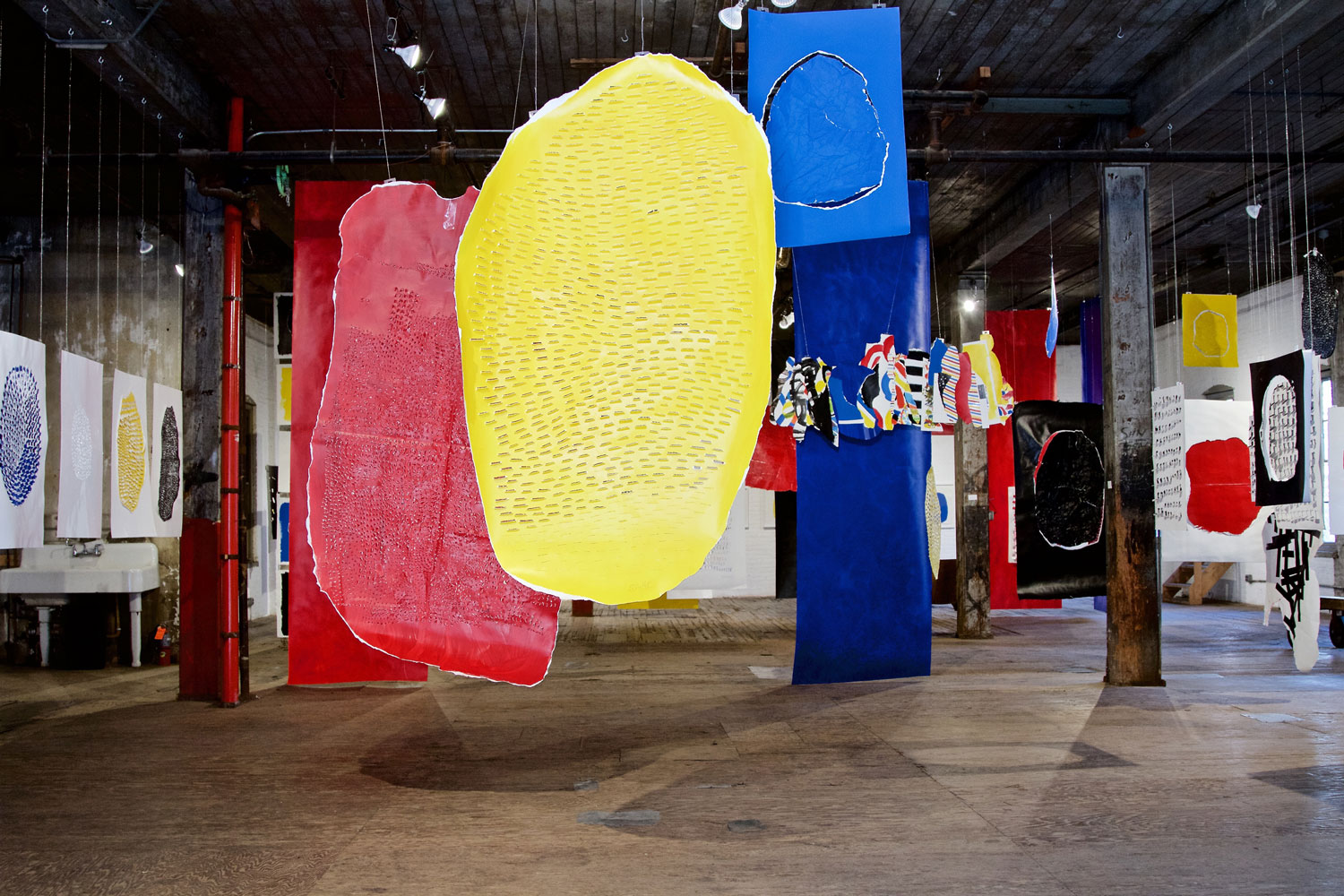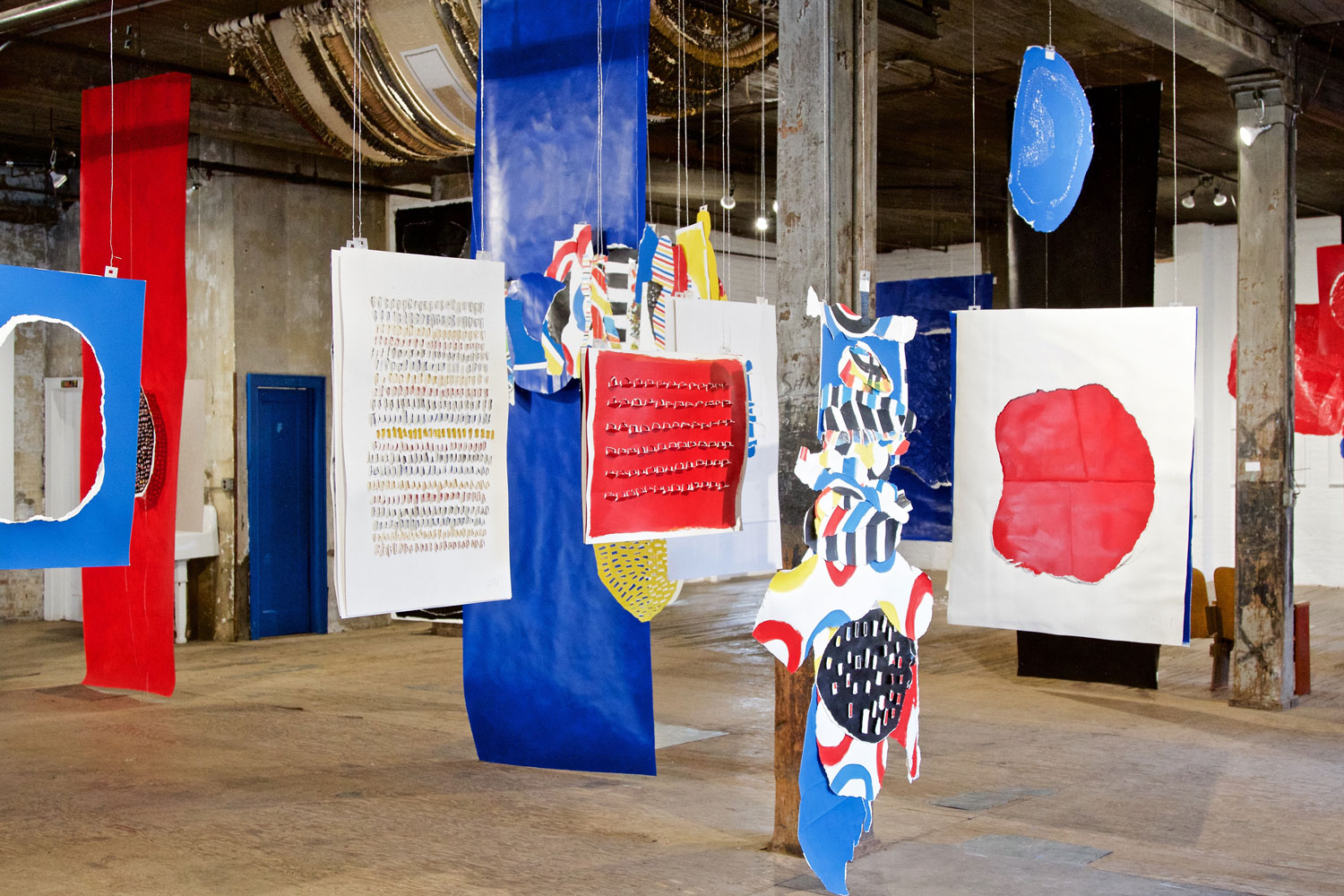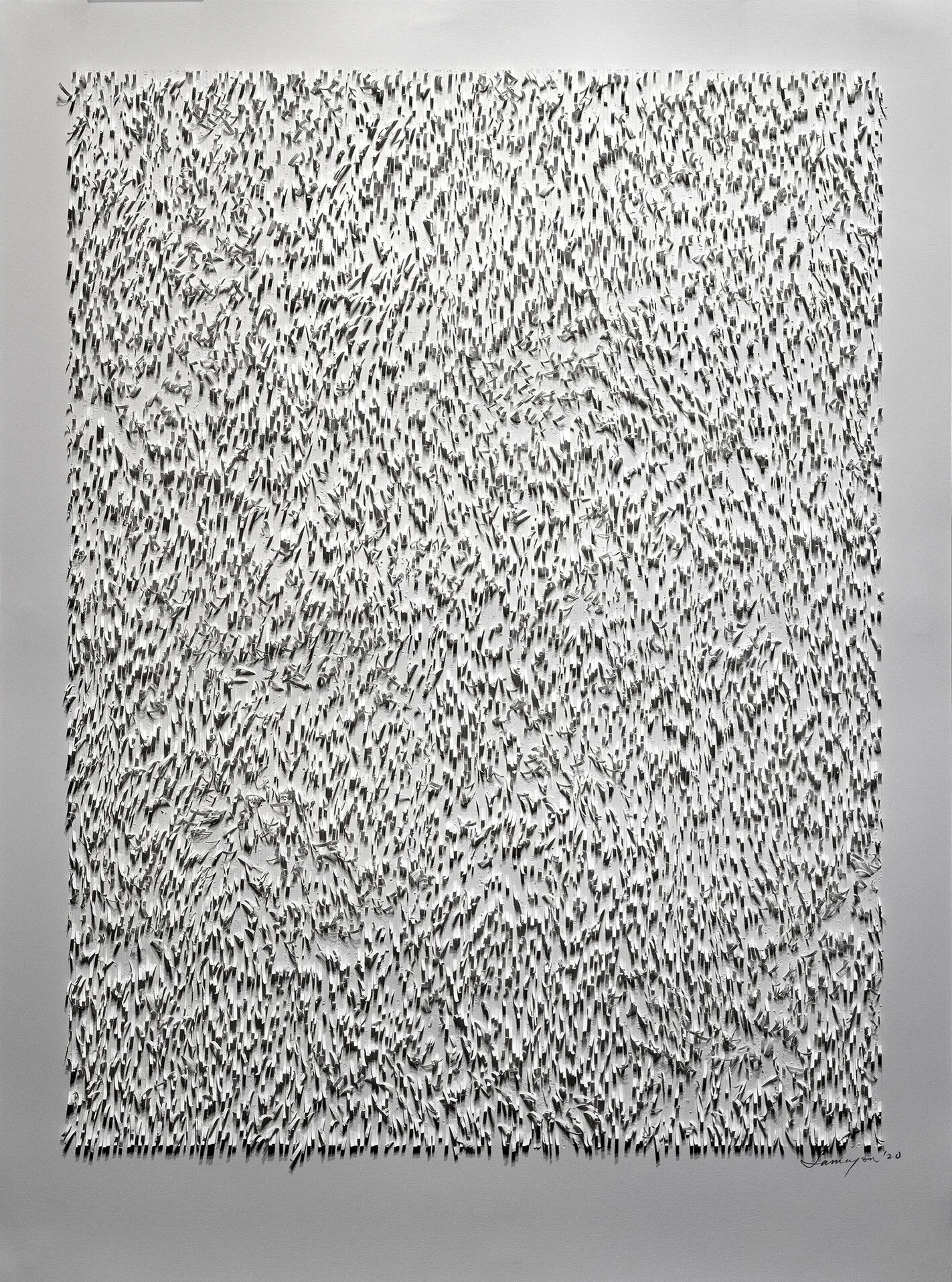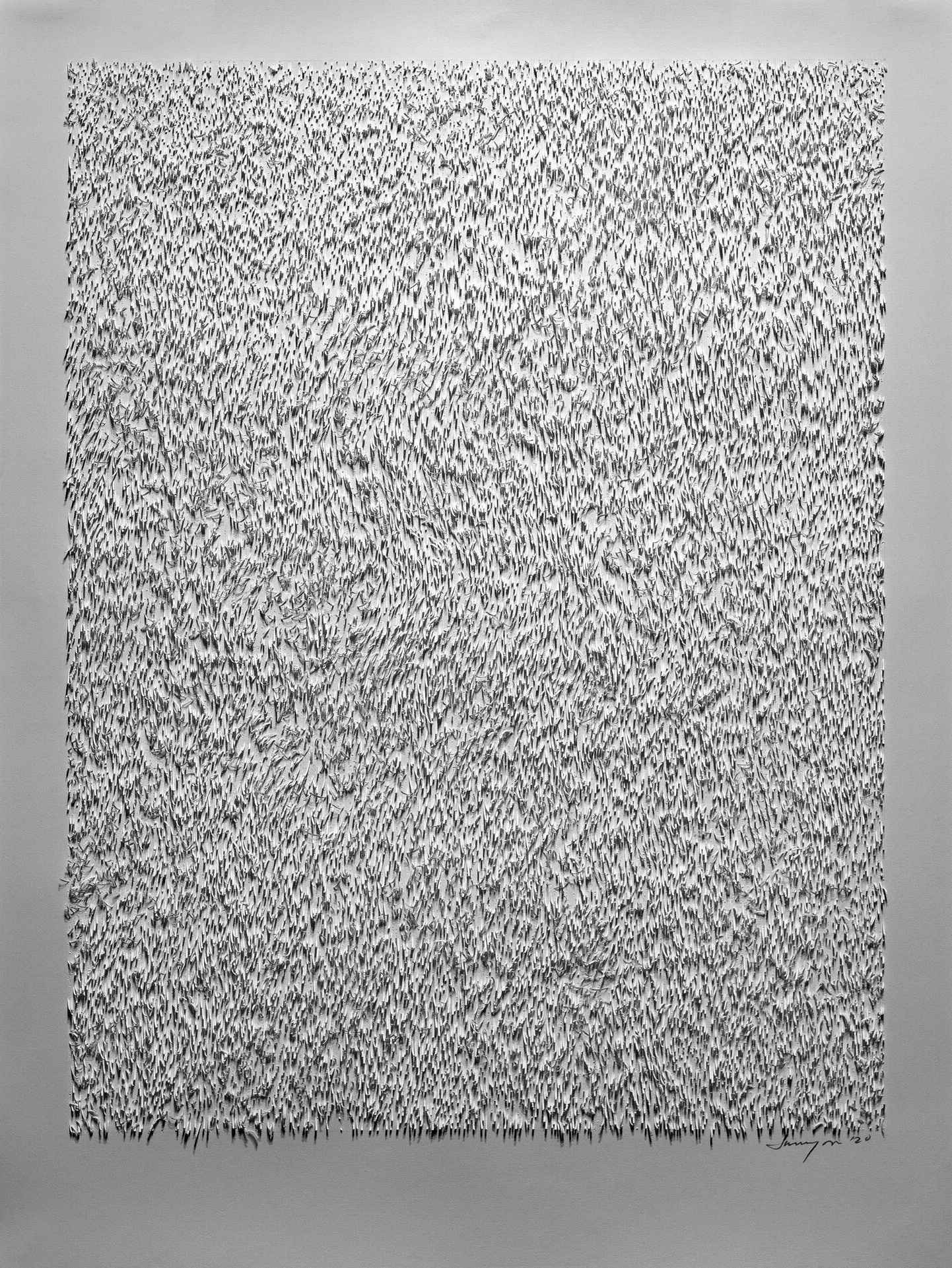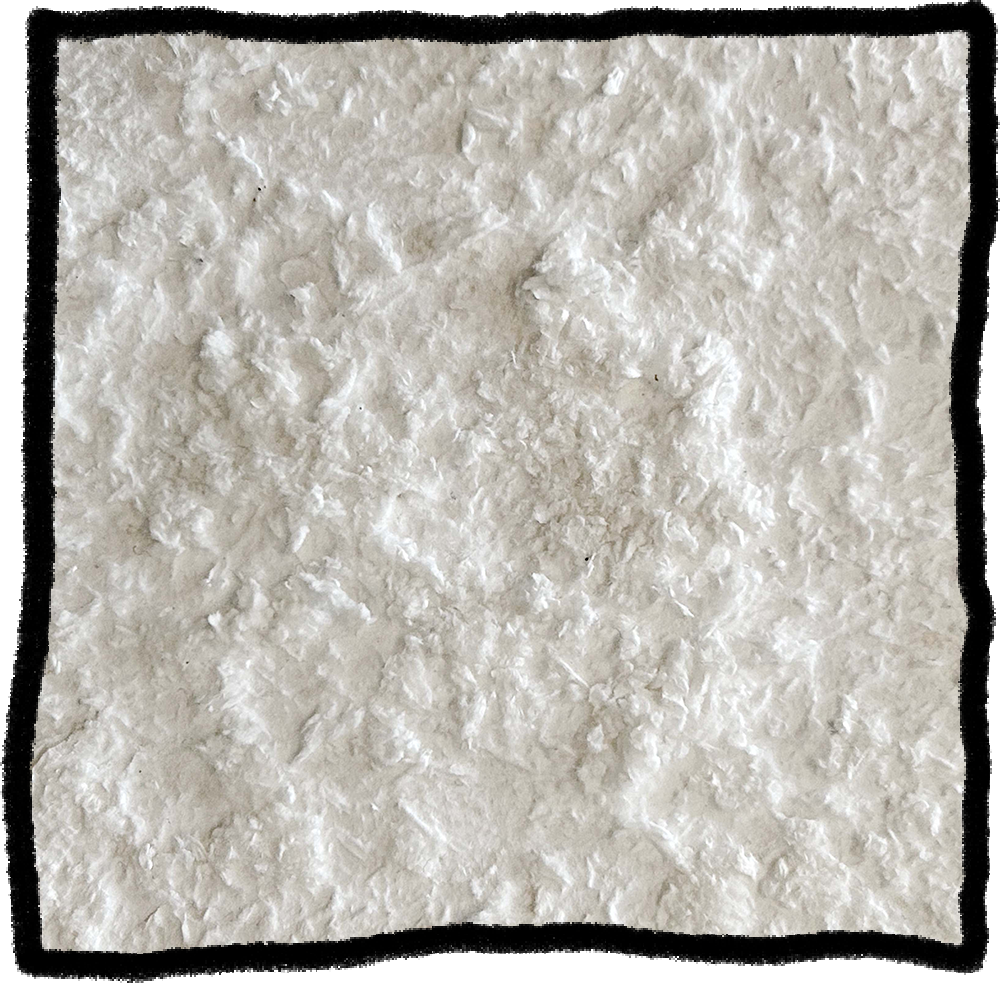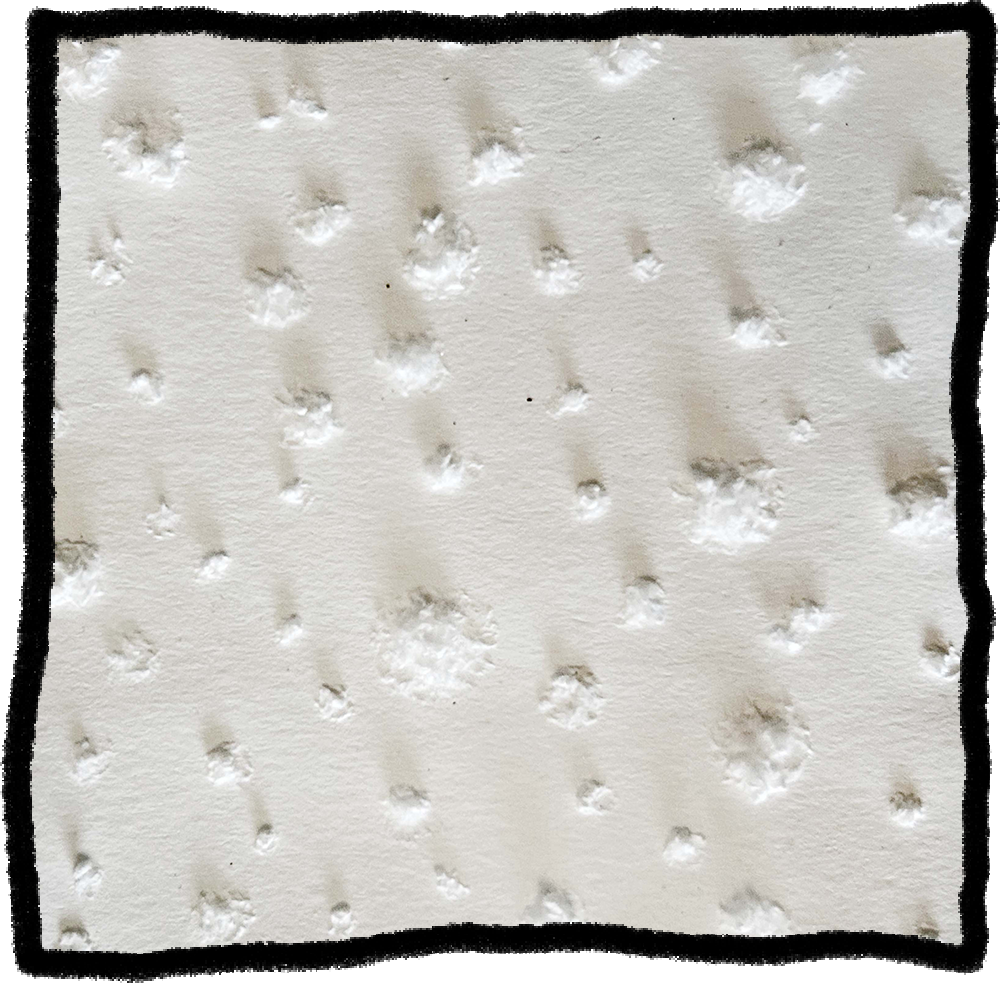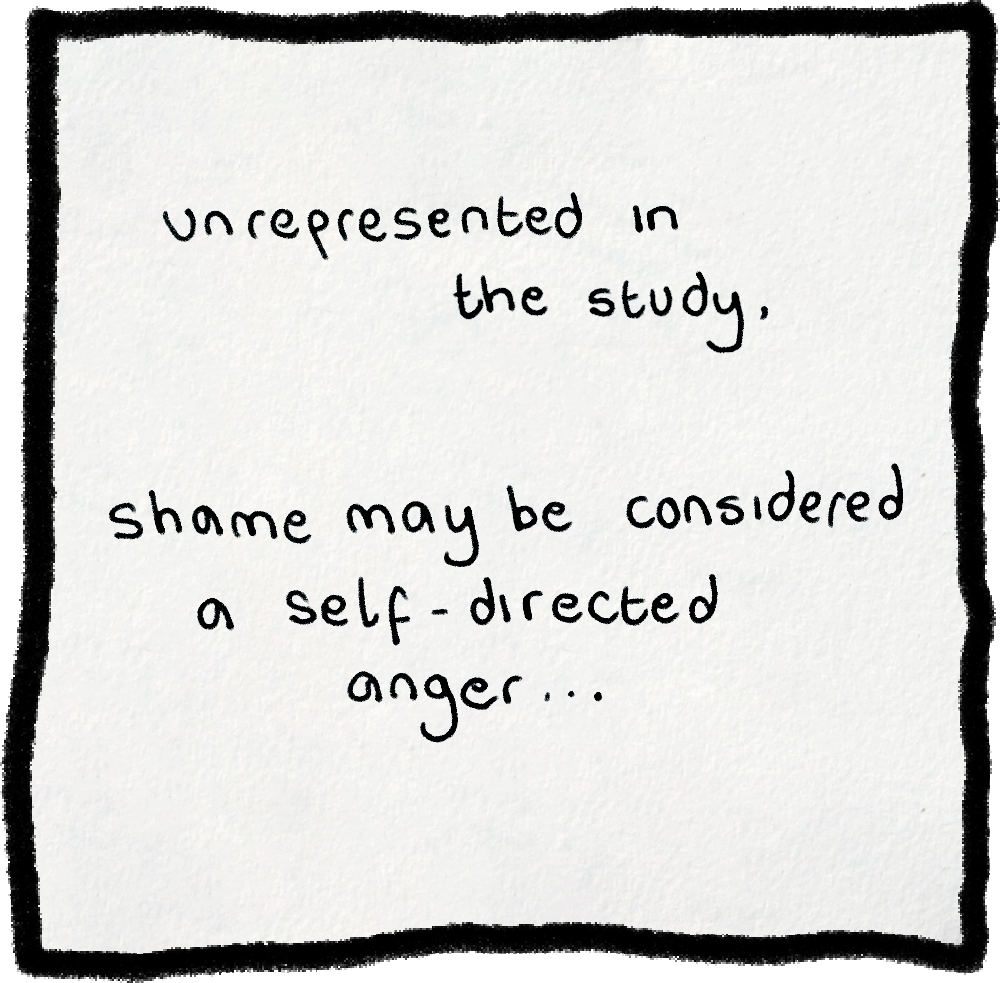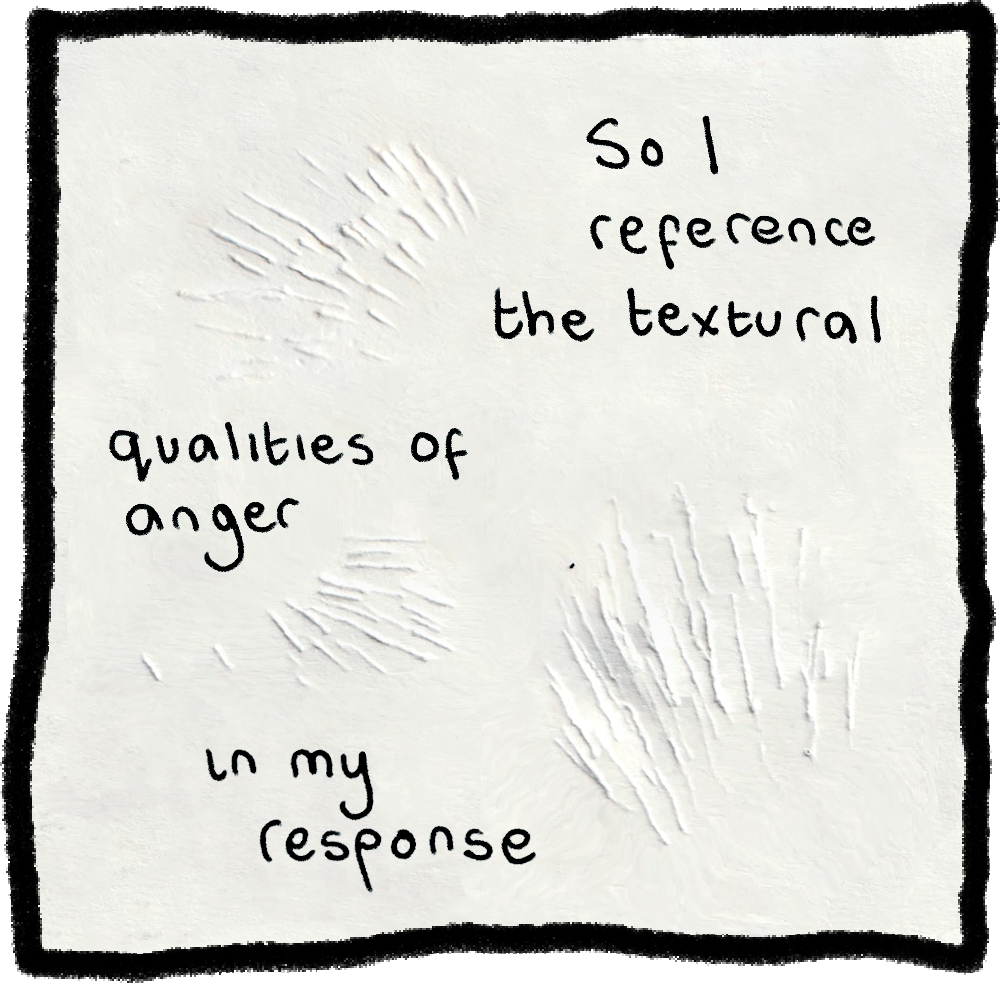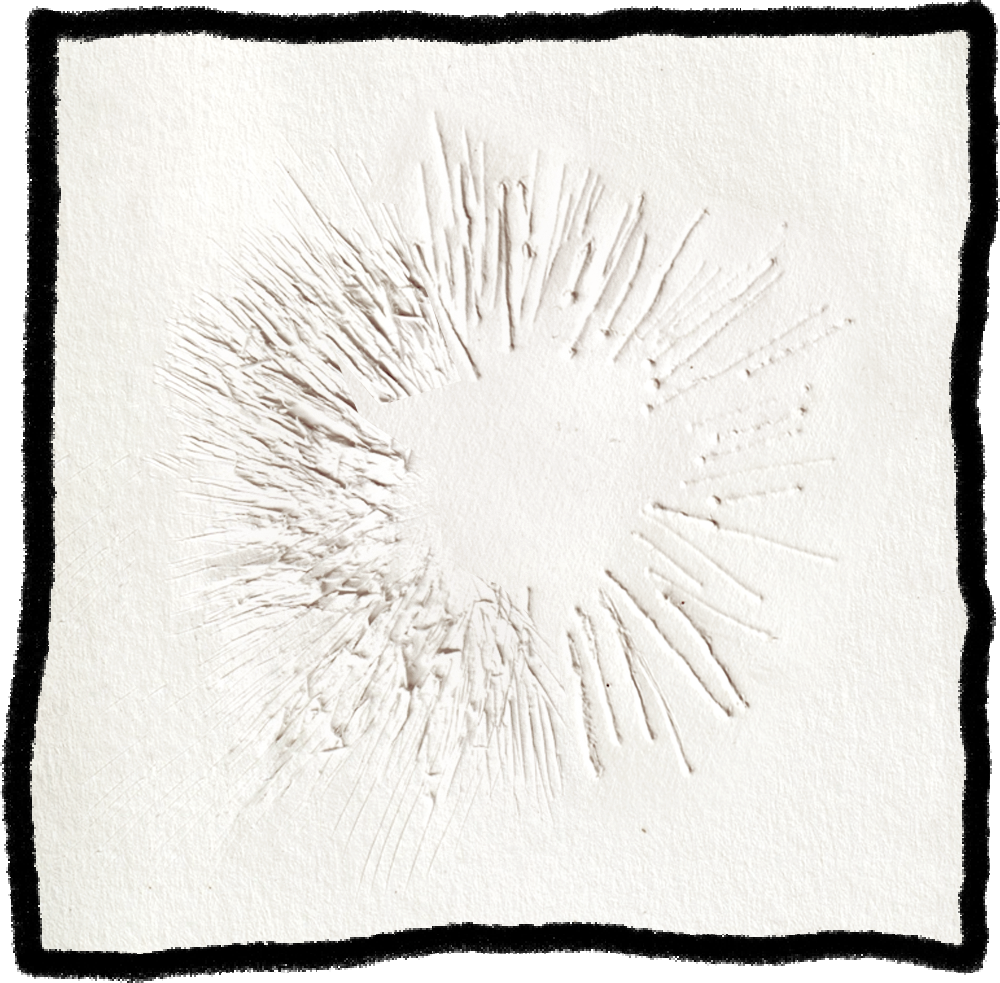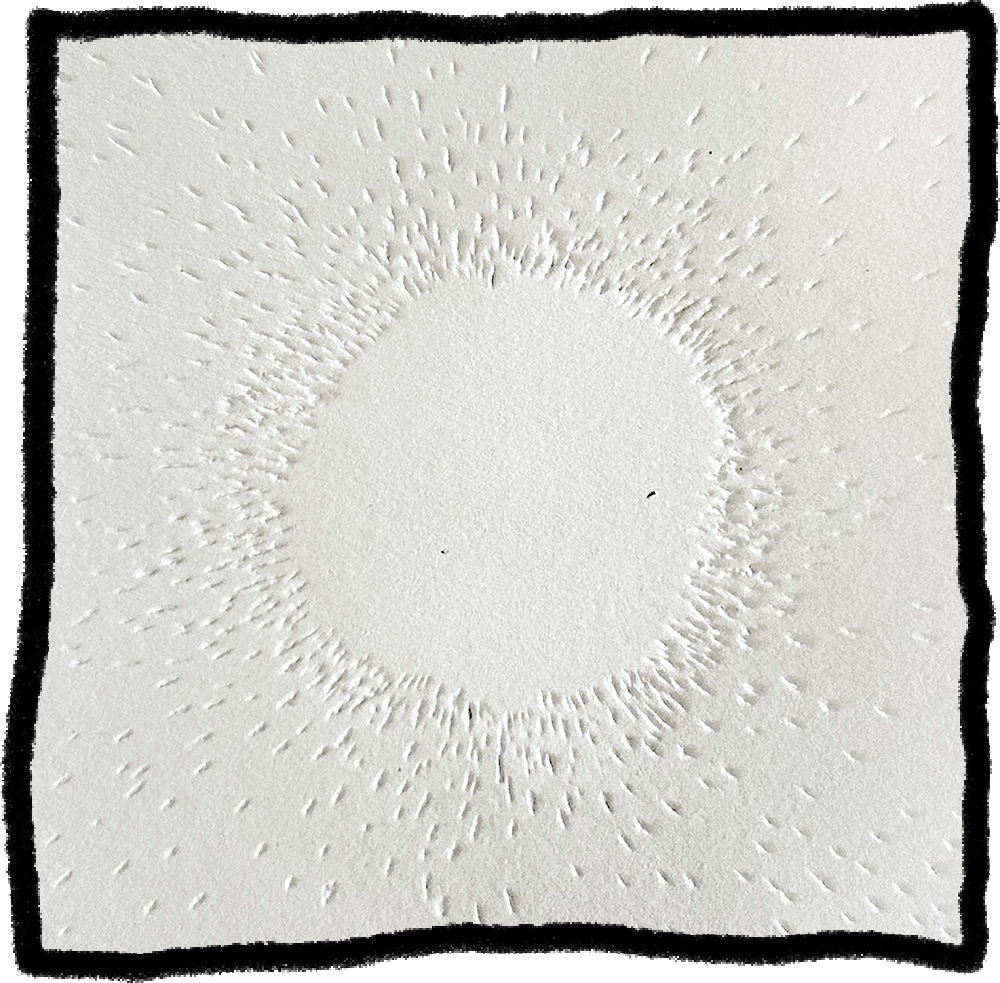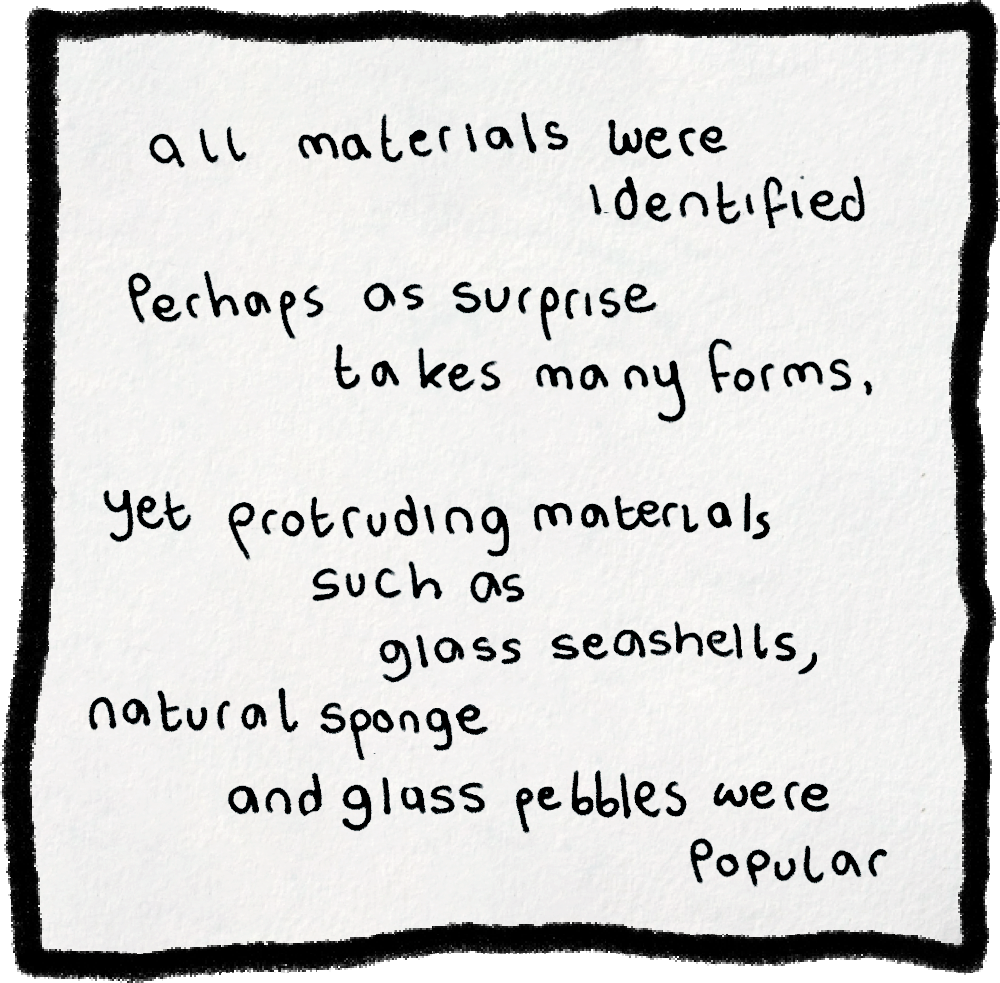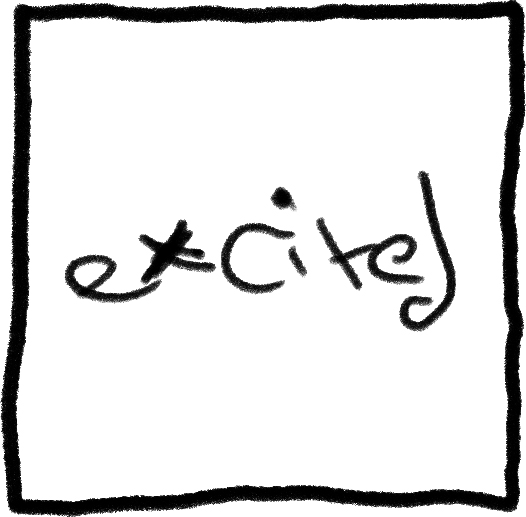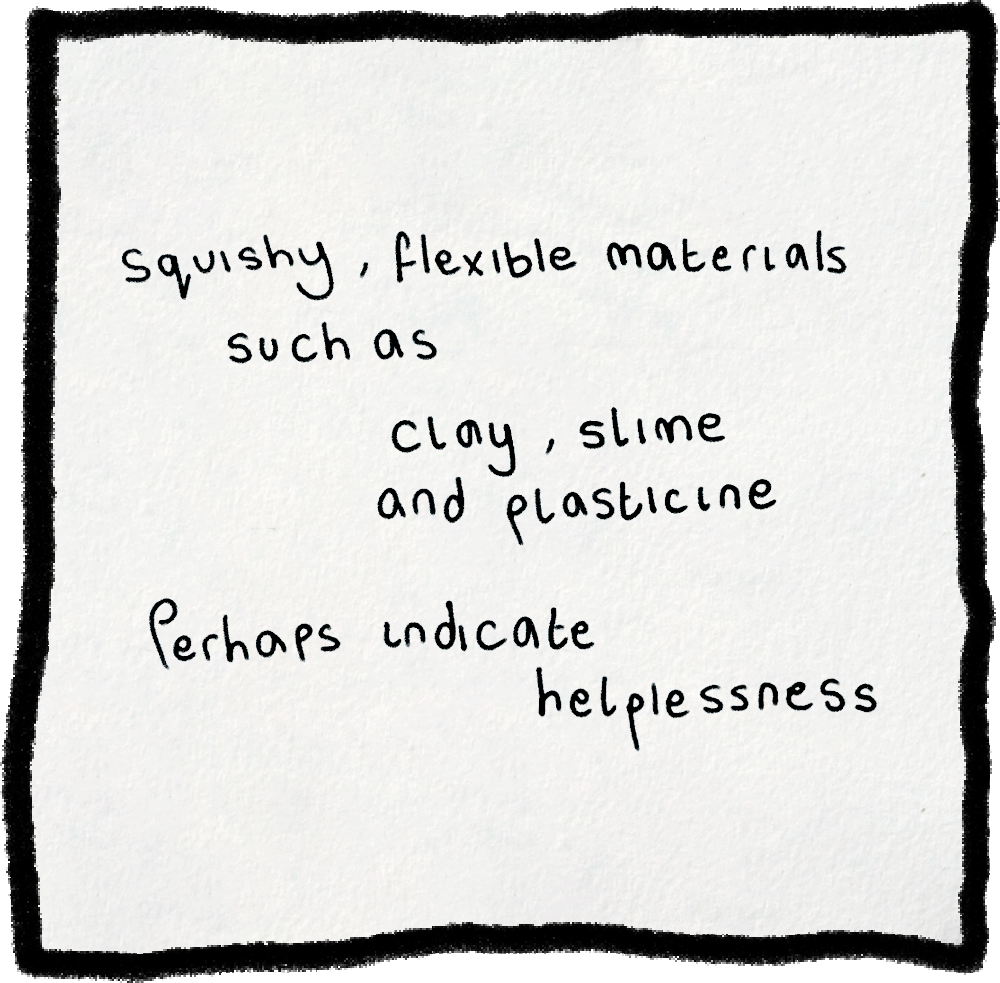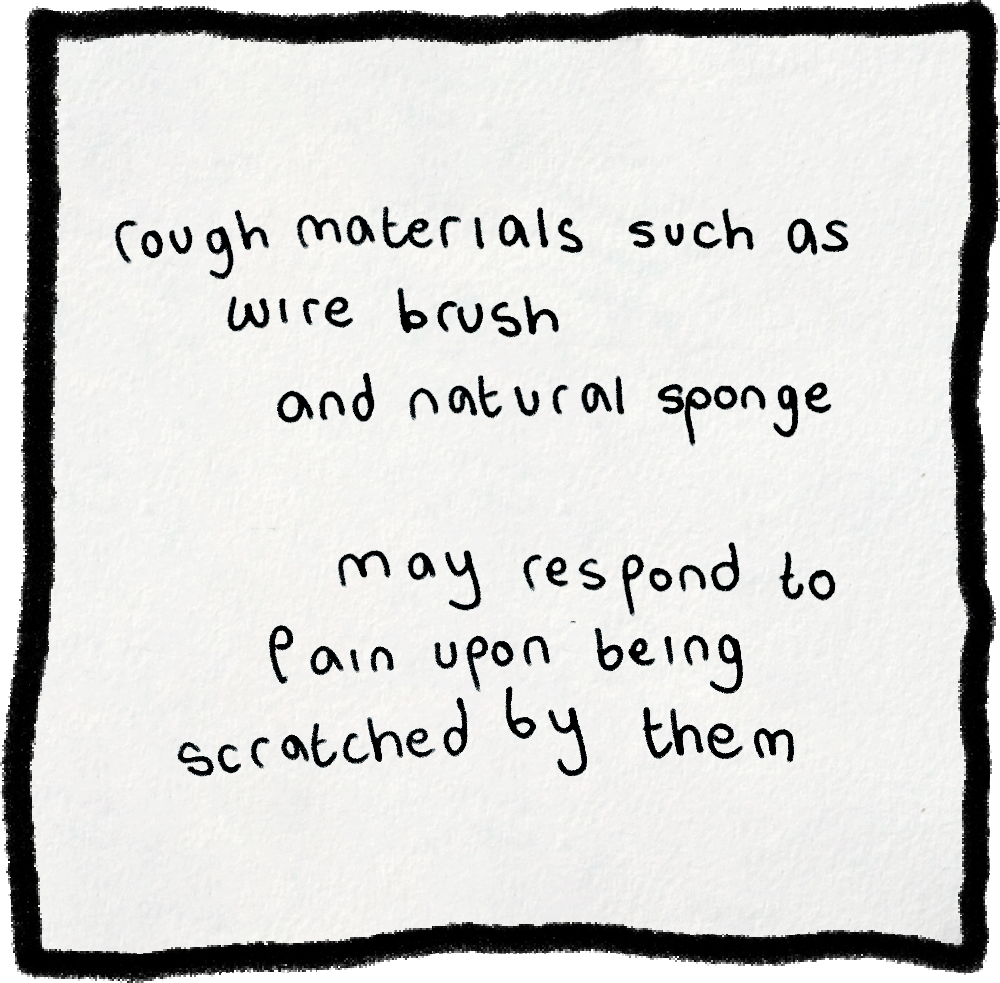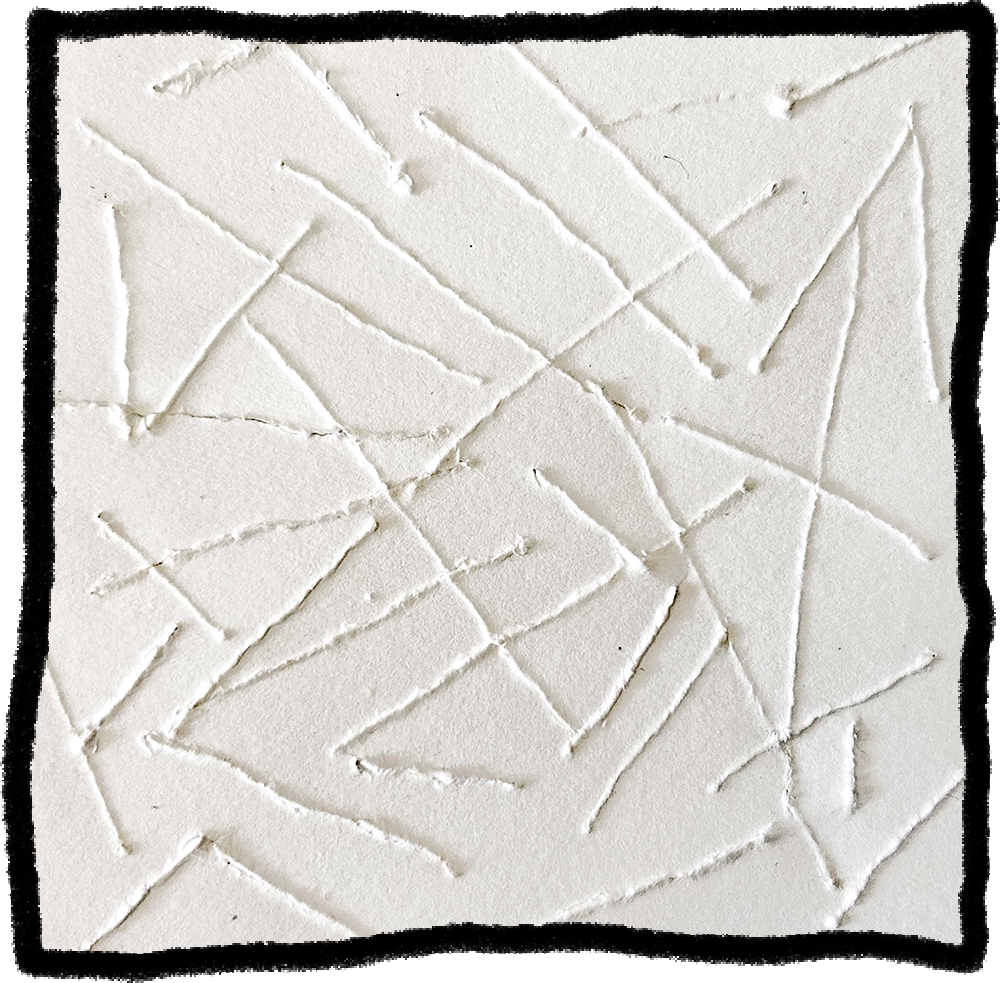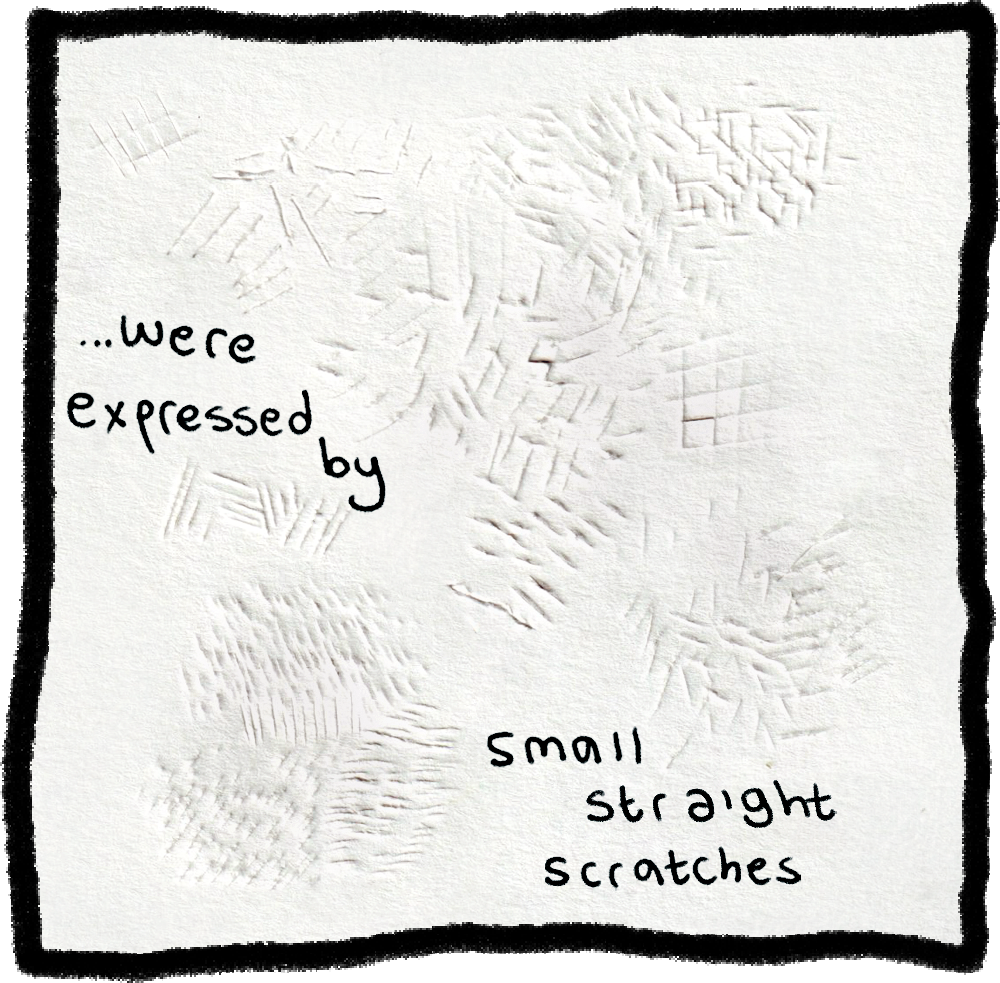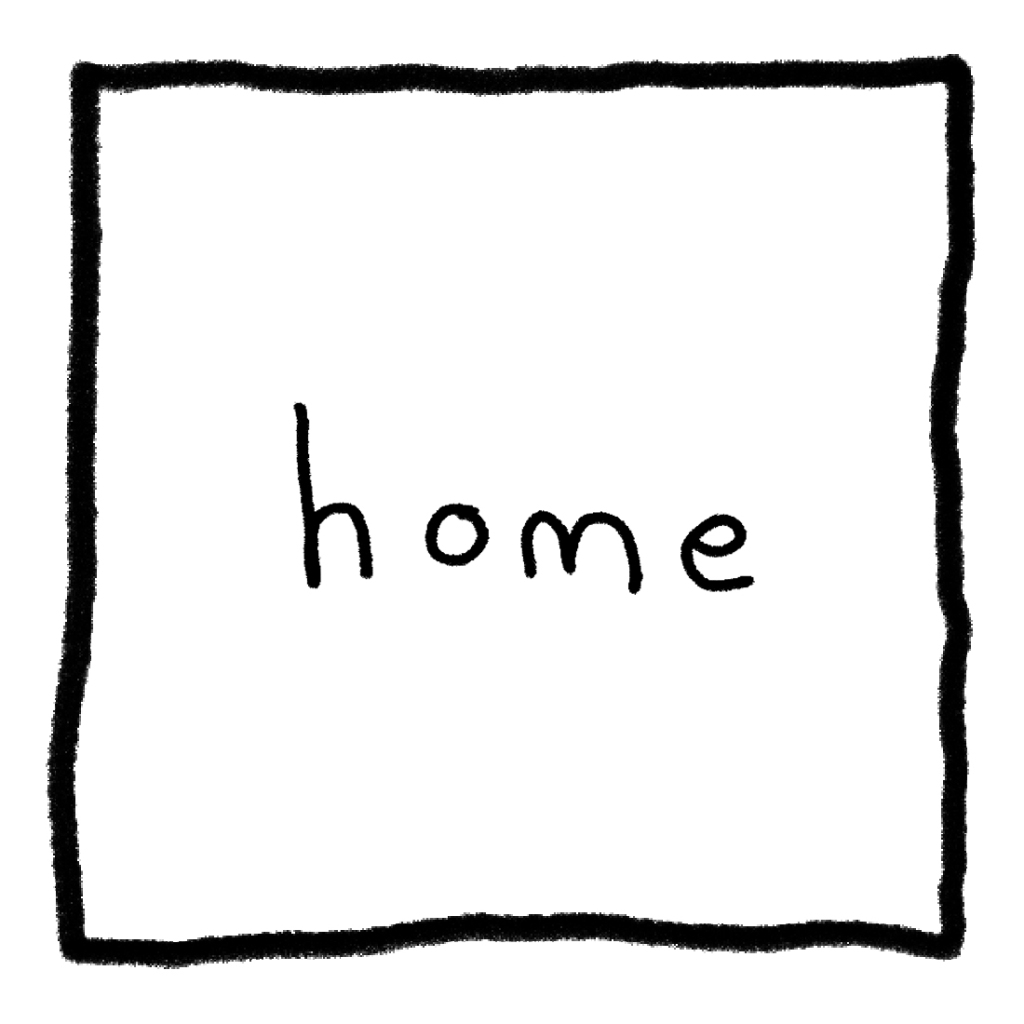
A spider’s bedroom
The spiders should be the dominant element on each page, as it is the creatures themselves that express emotion. The rooms are simply spaces they naturally inhabit, like a personal bedroom, so should only subtly enhance the emotion.
Clarity of narrative is expressed through the use of a single material and tool used in many ways reflective the unifying nature of the house. For this reason, I preferred to avoid cutting and sticking to create these textures.


Hervé Tullet
Herve Tullet produces expressive works using non-verbal elements such as colour, gesture and sound in workshops as part of his Ideal Exhibition series.
This process creates a clear, honest and accessible communication technique, as seen in the example video where children respond to the combination of Tullet’s physical gestures and book illustrations of simple forms in varied size with sounds of different audial qualities, effectively creating an understandable dialogue without the use of words.
I draw particular influence from Tullet’s use of varied texture and colour to create entire environments which invite participants to explore their own associations through their interaction, as Eliasson’s Your Blind Movement (2010) accomplished using colour. This evokes a series of different emotive stories in every journey and is particularly evident in This Isn’t Trash! (2018). I intend to encapsulate this feature within the book format.
Through this section of my project development, having already explored colour as narrative I focus solely on texture as a narrative tool.
This Isn’t Trash! (Tullet, 2018)

Mau Samayoa
Samayoa follows my intended process in his portrayal of different emotions through meticulous alteration of single sheets of paper using the same tool in Extreme Emotions in his One by One to One Million (2020-21) series, cutting the page with a blade in response to personal associations of each emotion from memory.
The resultant pieces, while appearing similar from afar due to their scale offer subtly differing qualities that encourage self reflection by the viewer as they question how these similar marks express each emotion for both Samayoa as well as themselves.
This reflective work is perhaps suited to an older audience in a personal setting rather than the communal environment I have envisaged, and I also intend to create more variance in my piece by using a wider palette of expressions by my chosen tool.

Emotion and Texture
I aim to create different textures from the paper itself to evoke each emotion when touched, effectively creating the narrative through the reader’s relationship with the upon interaction, similar to the work of Olafur Eliasson. This sensory exploration is also an important part of childhood development and is integrated into the curriculum.
An adult study by Iosifyan and Korolkova (2019) attempted to identify common material traits associated with emotions by asking subjects to touch a selection of materials exhibiting different textural qualities, rating them on intensity of association. I used the results to inform textural motifs related to each emotion.
| Material | Happiness | Fear | Disgust | Anger | Surprise | Sadness |
|---|---|---|---|---|---|---|
| Acupressure mat | 3 | 2 | 3 | 3 | ||
| Plasticine | 2 | 4 | 1 | 3 | ||
| Fur | 4 | 3 | ||||
| Sandpaper | 2 | 2 | 2 | 2 | ||
| Velvet | 4 | 2 | ||||
| Rubber | 2 | 2 | ||||
| Toy slime | 1 | 2 | 4 | 4 | ||
| Leather | 2 | 2 | ||||
| Silk | 3 | 2 | 1 | |||
| Clay | 1 | 2 | 3 | |||
| Glass | 2 | 1 | 2 | 2 | ||
| Wood | 2 | 2 | 1 | |||
| Wooden block | 2 | 1 | 1 | |||
| Marble | 1 | 2 | ||||
| Concrete | 2 | 1 | 1 | |||
| Brick | 1.5 | |||||
| Tile | 2 | 2 | 1 | |||
| Glass Pebbles | 3 | 3 | ||||
| Granite | 2 | 1.5 | 2 | |||
| Glass Seashells | 2 | 3 | 3 | |||
| Sponge | 3 | 2 | 1 | 3 |
Click through the boxes to explore my process!



References
Iosifyan, M., & Korolkova, O. (2019). Emotions associated with different textures during touch. Consciousness and cognition, 71, 79–85. https://doi.org/10.1016/j.concog.2019.03.012
L’expo idéale avec Hervé Tullet. (2018, December 10). Group Workshop: Reading – The Ideal Exhibition with Herve Tullet_Workshop . Vimeo. https://vimeo.com/305595526
Samayoa, M. (2020-21). Extreme Emotions [Paper Sculpture]. https://mausamayoa.com/works/one-by-one-to-one-million
Tullet, H. (2018). This isn’t trash ! [Installation]. Invisible dog, Brooklyn, NY. https://herve-tullet.com/2018/09/21/this-isnt-trash/


